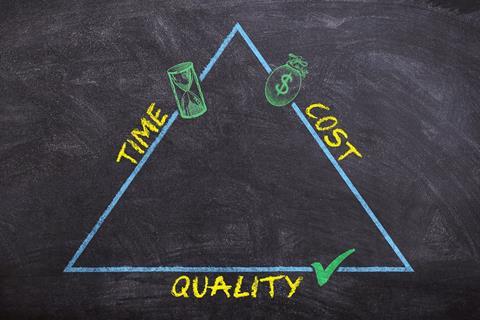ESG is not about cleaning up trash or minimizing waste, being a responsible custodian of data, or demonstrating integrity against corruption and fraud, it is about being more than an organization who’s checked all of the regulatory boxes and mitigated an acceptable amount of risk. Its about having a wider view of who the stakeholders who share in the organization’s success are and building value with that new picture in full view.

ESG has many ties with the concept of stakeholder capitalism, in which companies seek to add value while accounting for the needs of a wider range of stakeholders. To understand this, we need to define who these stakeholders are.
The first and easiest to understand are the organization’s shareholders, the owners of the company. This includes everyone from large shareholders all the way down to retail investors holding a fractional share.
These people directly share in the organization’s financial success. Doing right by them means operating a sound business. As such, it is easy to assume shareholders and stakeholders are one and the same, but the two are not mutually exclusive. As ESG metrics become more robust, investors increasingly reference them when making investment decisions.
Employees are another stakeholder. Employees can benefit in many ways from an organization’s success. Better pay or benefits, working accommodations, advancement opportunities, job security, are just a few ways employees share in the organization’s efforts.
Those organizations who demonstrate themselves as as ethical, fair, and sustainable companies can have success both attracting and keeping top talent.
But who are some less obvious stakeholders that we could widen our scope to include? Lenders share a stake in an organization’s success via their credit and liabilities.
A growing organization might take out loans to support new operations, profiting the lender. Over time, strong organizations might take out a number of loans, and reliably repay them. Lenders will have an interest in fostering the strength of organizations with which they do business.
Customers are also stakeholders. Whatever product or service an organization provides, the quality of it is of some benefit and value to the customer.
Those organizations who provide quality products, excellent customer support, and execute consumer friendly initiatives benefit the customers investment.
Customers also often trust those organizations with their sensitive data, and those organizations must act as good custodians of that information. Organizations with strong ethical corporate practices can become more appealing to ESG conscious consumers.
Suppliers are stakeholders as their business shares is a direct result of the other. A strong organization will leverage a 3rd party to create value, allowing that 3rd party to also grow its business, in turn expanding its own supply chain. Each of these organizations has an interest in the other. Many regulations are concerned with ensuring that 3rd parties and supply chains are managed with care, as they can be just as many points of vulnerability as those of value.
Lastly, the two most abstract stakeholders, the state and community, and the economy.
The state and community as stakeholders underpin the organizations role as a member of its own community. A strong organization can be a massive asset to a state or region, while a struggling one can present a liability.
In turn, those organizations are also subject to the ebbs and flows in prosperity of its community. Thus, their success or failure is intertwined. The responsibility of the organization is not only to that of the economy, but in the quality of life of the community that it both supports and is supported by.
ESG is very much predicated on the underlying assumption of much of this concept, that one organization can only perform well if its surrounding economy, and those resources that support it are functioning well.
Widening the scope demonstrates that there is a much larger group of stakeholders, all relying on the organization and each other to accomplish their goals.
ESG seeks to align these goals in such a way so that each organization can contribute in a meaningful way not just to its current stakeholders, but those in the future. The three pillars of ESG cover a number of considerations applicable to many of these stakeholders.
The Environmental pillar help to ensure that business will be possible in a prosperous future. The social pillar protects that valuable human capital, without which none of this would be possible in the first place. And the governance pillar ensures responsible leadership with such an important responsibility.


















No comments yet